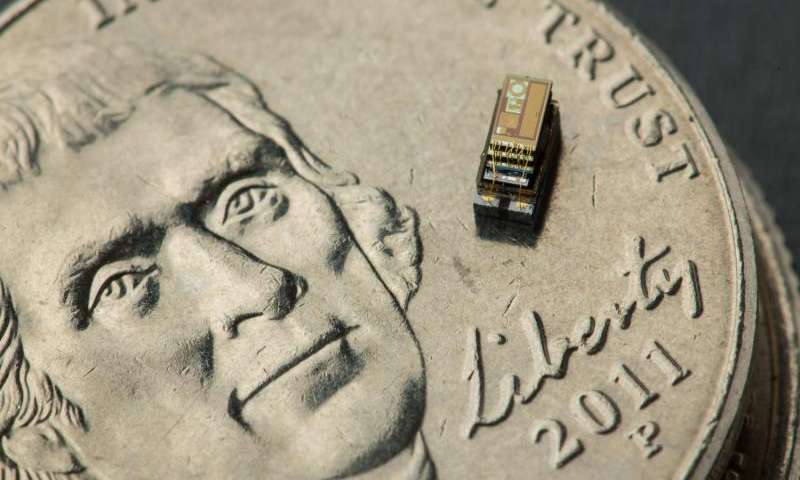
- Sensors are the input; radios are the output. Solar cells power the battery with ambient light, said the university report detailing the work and features of this computer. They use a 1mm2 solar cell producing 20nW.
- The device can harvest enough energy under ambient light to run perpetually. Standby power consumption is 2nA, a million times less power than the average mobile phone consumes while on standby.
- The computer is built in stacked layers. They communicate through a universal interface protocol, MBus. Just by exchanging one layer with another, a new sensing system is achieved. The computers can collect and transmit data as far as 2 meters; they can monitor a room for motion or anomalies in pressure and temperature, and communicate that data to a base station.